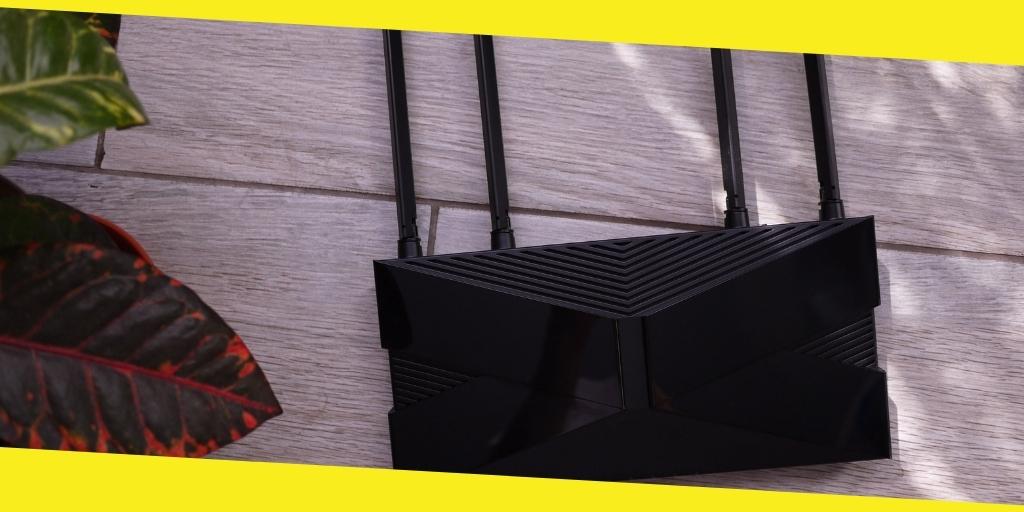What’s Next After Wi-Fi?
Every year, we see new and improved gadgets, gizmos and devices rolling out and breaking the records of popularity. So much so that we’re forced to ask: What’s the next best thing? We keep our eye on the horizon, as the world progresses at a rapid pace. The same is the case with Wi-Fi technology. Starting off as an experiment for utilizing ISM bands as unlicensed means of communication, Wi-Fi has grown to be a household name. Almost all internet services, from top-of-the-line like Cox internet down to local providers, offer in-home wireless networks as a part of their packages and plans. Though the current Wi-Fi standards deliver great speeds, we can’t help but wonder: What’s next in store for us? Let’s unravel this mystery below.
Contents
TogglePossibility of a New 802.11 Standard
Wireless networking technology evolves constantly. The latest wireless networking standard is Wi-Fi 6, known technically as 802.11ax. While the world is yet to completely experience Wi-Fi 6, there are talks about the next Wi-Fi standard already in the making, dubbed as Wi-Fi 7 unofficially, though chances are that it’ll come to be labeled as “802.11be” by the Alliance. Wi-Fi 7 is expected to improve upon Wi-Fi 6, enabling smoother video streaming, powerful data uploading, more extended coverage, and lesser congestion from connecting devices, etc.
Qualcomm’s VP has promised to deliver a gigabit wirelessly in every cranny and nook of the house, so users won’t ever have to worry about running out of data, facing spotty reception, or restricting their mobility with a wired connection. According to V.K. Jones, Wi-Fi 7 may actually replace wired connectivity in a home, with 30 gigabits per second. It’ll be THAT fast, wholesome, and efficient. The Institute of Electrical and Electronics has planned on releasing Wi-Fi 7 in three main phases, which we’ll see soon.
-
Unlocking the 6 GHz Spectrum
The groundwork for the arrival of Wi-Fi 7 will depend greatly on the readiness of the US and European governments to open and sanction new airwaves for radiofrequency transmission. Currently, providers use two main radio frequency bands to deliver data wirelessly to users. These are 2.4 GHz and 5 GHz – sufficient but not exactly ideal, as they create space for lags on the network and are generally crowded.
To improve the overall Wi-Fi throughput and data roundtrip, engineers are striving to expand the RF spectrum and introduce a new band, i.e. 6 GHz in Wi-Fi 7, which will have the propensity to quadruple the transmission speeds and offer a wide-open space for data to travel, with next-to-no traffic.
-
Enabling a Multi-Band Usage
Networking standards of today, such as Wi-Fi 5 or even Wi-Fi 6, send data over one radio frequency band at a time, which the user specifies in the configuration settings. It could either be 2.4 GHz or the 5 GHz band, each having its own set of pros and cons. This practice limits the potential uses of the radiofrequency spectrum. The good news is that Wi-Fi 7 or 802.11be is not only anticipated to bring a new 6 GHz band, but also have the ability to transmit data on not one, not two but all three frequencies simultaneously, thus making the most out of the wireless frequency spectrum and maximizing speeds along with coverage.
-
Introducing the UL MU-MIMO
The next generation of wireless networking technology may introduce UL MU-MIMO or the “Uplink Multiuser Multiple-Input Multiple-Output” feature into the system. What do we have currently? Let’s see: Wi-Fi 4 and Wi-Fi 5 devices have MIMO built-in, which transmits data on multiple pathways to avert hurdles and reach the target device with greater success. Similarly, Wi-Fi 6 takes it up a notch with MU-MIMO, allowing an access point to transmit MIMO-oriented data to multiple user devices in the network. So far, the standards have upgraded the downtime only.
Wi-Fi 7, on the other hand, is hoped to improve the “uplink speed” from multiple user devices with UL MU-MIMO. Imagine live streaming from several smartphones at a time and uploading an uninterrupted video in real-time from all devices. This is what Wi-Fi 7 may introduce in its second phase of development.
-
Undertaking a Spatial Expansion
Coverage is a big issue with Wi-Fi networks. Even the best-of-the-best long-range access points can’t cover every room and every floor, which disrupts the signal pathway and gives rise to lags. Though Wi-Fi 6 has ushered in a significant advancement when it comes to the wireless range, there is still space for improvement.
It is rumored that Wi-Fi 7 will boost range, speed and decelerate traffic congestion by integrating a feature, known as CMU-MIMO or “Coordinated Multiuser Multiple-Input Multiple-Output” in its network. CMU-MIMO will deal with a 16-antenna arrangement, instead of an 8-antenna arrangement as is the norm with Wi-Fi 6. What’s more, these antennas will not necessarily be on one access point. Rather, they will be spread out throughout a residence in a semblance to mesh systems.
The multiple access points with antennas will “cooperate” and “coordinate” with each other, expanding the spatial resolution of the wireless network in the house to get the most out of the RF spectrum. Engineers have their doubts about the functional aspect of this feature, but should it work, it will eliminate dead zones and allow every device to experience gigabit-level speeds.
-
Aiming for Higher Data Rates
In wireless LAN, QAM or “Quadrature Amplitude Modulation” is a technology, which takes encoded data packets and organizes them into radiofrequency signals, so they can travel on the airwaves and reach the requesting devices in the network. Wi-Fi 6 has a 1024QAM, which boosts the outgoing signals and increases the data throughput per modulation cycle. Updating on that, Wi-Fi 7 will squeeze in even more data into a radiofrequency signal utilizing its 4096-QAM technology, aiming for higher data rates.
The Final Word
It is hard to guess when a new version of network technology will launch officially, though sources say that we can expect to see the next best Wi-Fi standard in 2024, depending on how keenly governments comply and how far engineers can push the limits of the wireless spectrum. At present, we have Wi-Fi 6 to experience, which is already making big waves in the market and arriving in network devices, smartphones and laptops. Let’s see what the future brings us!
Recommended For You
Top 5 File Sharing Apps for Android
Most Inside
Most Inside offers high-quality recommendations and valuable updates to enhance all aspects of your life, providing premium guidance and enriching experiences.





